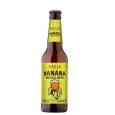Vincent Speranza, a World War II veteran, became an unexpected legend 65 years after the Battle of the Bulge when he learned about his famous deed involving a helmet full of beer. Born in 1925 in Hell’s Kitchen, New York, Speranza’s tale of courage and impromptu ingenuity during one of the war’s fiercest battles only came to light decades later, illustrating how individual actions can resonate far beyond their immediate context. This article delves into Speranza’s journey from a young soldier drafted into the 101st Airborne Division to a celebrated figure in European historical memory. It traces his wartime actions, particularly during the grueling winter of 1944 in Bastogne, where he inadvertently created a legacy with what is now known as “Airborne Beer.” After his platoon ran out of medical supplies during the siege, Speranza fetched beer from an abandoned tavern using his helmet to quench the thirst of wounded soldiers. This act of camaraderie and resilience became a symbol of hope and human spirit amidst the horrors of war.
Following the war, Speranza returned to a peaceful life in the United States, embarking on a career in education and raising a family, seemingly closing the chapter on his wartime experiences. However, a chance encounter in a gun store with a Belgian woman led him back to Bastogne, where he discovered that his story had transformed into local lore, celebrated by the town and immortalized by the “Airborne Beer” served in helmet-shaped ceramic pots. Exploring both Speranza’s personal narrative and the broader implications of his actions, this article also highlights how these events shaped his post-war life and continued influence. His return to Bastogne not only rekindled old memories but also underscored the enduring bond between liberators and those they freed, reflected in the homage paid through the unique brew named after the airborne troops he once served with. Through this lens, we examine the impact of war on individual lives and the unexpected ways in which stories like Speranza’s can inspire and educate future generations.
| Subject | Details |
|---|---|
| Background | Vincent Speranza, born in 1925, Hell’s Kitchen, New York; drafted into the 101st Airborne Division during WWII. |
| War Experience | Known for his act of fetching beer in his helmet to aid wounded soldiers during the Battle of the Bulge, Bastogne, 1944. This act led to the creation of “Airborne Beer”. |
| Post-War Life | Returned to the U.S., pursued a career in education, raised a family, and led a peaceful life. |
| Legacy and Recognition | Discovered his wartime story had turned into local lore in Bastogne during a later visit, inspired by a chance encounter with a Belgian woman. “Airborne Beer” now celebrates his story, served in helmet-shaped pots. |
| Impact and Reflection | Examines the enduring impact of war on individuals and communities, highlighting how Speranza’s story continues to inspire and educate. |
Contents
Early Life and Military Training
Vincent Speranza was born on March 23, 1925, in the bustling urban landscape of Hell’s Kitchen, New York. Growing up in a close-knit immigrant Italian family from Sicily provided him with a rich cultural heritage and a strong sense of community, traits that would later define his character during the war. The family later moved to Staten Island, where Vincent spent much of his formative years amidst the backdrop of the Great Depression, a period that taught him resilience and resourcefulness.

In late 1943, as World War II raged across continents, Vincent, like many young men of his time, was drafted into the U.S. Army. His initial military training took place at Fort Benning, Georgia, with the 87th Infantry Division. It was here that Vincent first witnessed a demonstration of an airborne training jump. The daring and skill displayed by the paratroopers captivated him, and he immediately volunteered to become one himself. This decision marked the beginning of a new chapter in his life, one that would see him transform from a city boy into a skilled paratrooper of the renowned 101st Airborne Division.
Following his paratrooper training, Vincent and his comrades were transported to the United Kingdom aboard the RMS Queen Mary. The iconic British ocean liner, then under American control, was part of the massive logistical effort to prepare for further operations in Europe. Upon arriving in the UK, they underwent further intensive training, gearing up for their role in the liberation of occupied Europe.
Their first major test came shortly after the ill-fated Operation Market Garden in September 1944. Vincent and his unit were deployed as replacements, filling the ranks thinned by the operation’s heavy casualties. This deployment set the stage for their involvement in one of the most significant battles Vincent would face—the Battle of the Bulge.
| Topic | Details |
|---|---|
| Early Life | Born on March 23, 1925, in Hell’s Kitchen, New York, in an immigrant Italian family from Sicily. Grew up in Staten Island during the Great Depression, learning resilience and resourcefulness. |
| Military Enlistment | Drafted into the U.S. Army in late 1943, initially with the 87th Infantry Division at Fort Benning, Georgia. Volunteered for airborne training after witnessing a jump. |
| Training and Preparation | Completed paratrooper training and was part of the 101st Airborne Division. Transported to the United Kingdom on the RMS Queen Mary for further training in preparation for European operations. |
| Deployment in Europe | Deployed as a replacement after Operation Market Garden, leading up to participation in the Battle of the Bulge. |
The Battle of the Bulge
On December 16, 1944, Nazi Germany launched a massive counteroffensive through the Ardennes forest, catching the Allied forces off guard. This offensive was intended to split the Allied lines and capture key ports, but it also led to the encirclement of the town of Bastogne, where Vincent’s unit, the 101st Airborne Division, was hurriedly sent. They arrived in trucks, woefully under-equipped for the harsh winter conditions, without proper winter gear or sufficient supplies.
The strategic importance of Bastogne was immense, as it held seven major roads that the German forces needed to sustain their advance. The 101st Airborne, alongside elements of the 10th Armored Division and other units, was tasked with holding the town at all costs. Amidst this chaotic scenario, the division’s main medical facilities could not cope with the number of casualties. Many of the medical supplies and personnel had been captured or were unavailable. A makeshift aid station was urgently set up in a local church. Here, the wounded were laid out on the floor, covered with curtains and bedspreads scavenged from nearby homes, an eerie testament to the desperate conditions.

During a brief lull in the fighting, Vincent was sent back to the town from his forward position to fetch radio batteries. It was then that he visited the makeshift church aid station to see a friend, Joe Willis, who was among the wounded. Joe asked Vincent if he could find him something to drink. Despite the siege and the unlikely prospects, Vincent agreed to look. Miraculously, he discovered a still-working beer tap in the second of the abandoned taverns he checked. With no glasses left intact, he used the only container he had—his helmet, the same one he’d later wear back in combat.
Vincent filled the helmet with beer and returned to the church, a small act that brought temporary relief and a moment of camaraderie to the grim setting. His comrades, appreciating the gesture, quickly sent him back for more. However, upon his return with a second helmet full of beer, he was chastised by the regimental surgeon for potentially harming the wounded with alcohol. Unfazed, Vincent saluted, poured the beer over himself in frustration, and hurried back to his fighting position.
This incident, which might have passed unnoticed in the grand scale of the war, later became the stuff of legend, celebrated decades after the war in a most unexpected fashion—through the creation of “Airborne Beer,” a tribute to the courage and spirit of the airborne troops and their unlikely bartender, Vincent Speranza.
| Event | Details |
|---|---|
| German Offensive and Bastogne Encirclement | On December 16, 1944, the Nazi counteroffensive through the Ardennes began, leading to the encirclement of Bastogne. The 101st Airborne Division, including Vincent, was deployed to hold the town despite lacking adequate winter gear and supplies. |
| Role of Bastogne | Bastogne was strategically critical as it controlled seven major roads needed by the German forces. The 101st Airborne and other units were tasked with defending it at all costs. |
| Conditions and Medical Crisis | Due to the intense battle, medical facilities were overwhelmed. A makeshift aid station was set up in a local church to care for the wounded, using scavenged household items for cover. |
| Beer Helmet Incident | During a lull, Vincent found beer in an abandoned tavern and used his helmet to carry it to wounded friends in the aid station. Though initially appreciated, he was later reprimanded by a surgeon for giving alcohol to the wounded. |
| Legacy of the Incident | This act of camaraderie during dire times evolved into a legendary tale, leading to the creation of “Airborne Beer,” a tribute to the airborne troops and their makeshift bartender, celebrated decades later. |
The Post-War Years
After his heroic acts during the Battle of the Bulge, Vincent Speranza continued to serve with distinction through the final stages of World War II in Europe. One of his most impactful experiences was participating in the liberation of a subcamp of the Dachau concentration camp at Kaufering. Witnessing the atrocities committed there profoundly affected him and his comrades, shaping their views on the enemy and reinforcing the moral imperative of their mission. As the war drew to a close, Vincent also made it to Hitler’s infamous retreat, the Eagle’s Nest at Berchtesgaden. There, he discovered a color-coded world map that starkly illustrated the Axis powers’ plans for global domination—a vivid reminder of what had been at stake.
With the war over, Vincent returned to New York aboard the RMS Queen Mary, which had been repurposed to bring American troops back home under Operation Magic Carpet. Transitioning from soldier to civilian, Vincent embraced a peaceful life, marrying, starting a family, and embarking on a career as a history teacher. His experiences during the war enriched his teachings, allowing him to offer his students firsthand insights into the complexities of history and the human condition during times of conflict.
| Phase | Details |
|---|---|
| Post-Battle of the Bulge Service | Vincent continued serving through the final stages of WWII in Europe, including the liberation of a subcamp of the Dachau concentration camp at Kaufering and visiting Hitler’s retreat, the Eagle’s Nest. |
| Witness to Atrocities | The liberation of Kaufering deepened Vincent’s understanding of the war’s moral dimensions and the gravity of the Allies’ mission against the Axis powers. |
| Return to New York | Returned home aboard the RMS Queen Mary under Operation Magic Carpet, marking his transition from military to civilian life. |
| Post-War Life and Career | Settled into civilian life; married and started a family; pursued a career as a history teacher, enriching his lessons with personal war experiences and insights. |
Rediscovery and Legacy
Vincent Speranza’s war-time story remained largely untold outside his family and close friends until a chance encounter about 65 years later, which marked the beginning of his late-life fame. While visiting a gun store, he met a Belgian woman from Bastogne who recognized his name. She urged him to return to Bastogne to see firsthand how the local people still remembered and honored the 101st Airborne Division’s efforts during the war. Accompanied by his daughter, Vincent traveled to Bastogne for the first time since the war ended.
Upon arriving, Vincent was astonished to learn that the story of his makeshift beer delivery during the siege had become legendary among the locals. This discovery was both humbling and surreal, especially as he found out that his act of bringing beer in his helmet to his wounded comrades had inspired the creation of “Airborne Beer.” This special brew was made in his honor by the Brewery deBouillon, based on a recipe from the Lamborelle brewery, which existed in Bastogne during the war.

“Airborne Beer” was crafted to commemorate not only Vincent’s spontaneous act of camaraderie but also the spirit and bravery of all airborne troops during the Battle of the Bulge. The beer comes in two varieties: a blond and a brown. The blond beer is known for its creamy white head, compact body, and a mix of barley and hop aromas, providing a prolonged bitterness that is well balanced. Its flavor profile is designed to mature over time, becoming rounder and more developed. The brown beer offers a deep, dark copper color with a robust head, featuring a roasted malt taste and a sweet aftertaste. It’s a milder version of a Belgian Double, infused with subtle hints of anise and clove on the nose.
Both varieties of Airborne Beer are brewed as a tribute to the resilience and ingenuity of the soldiers and the locals who experienced the siege of Bastogne. The beer is available primarily in Bastogne, where it can be tasted in the most authentic setting possible, adding to the historical experience of visitors.
Vincent’s story and the Airborne Beer have become symbols of the enduring legacy of the 101st Airborne Division in Bastogne, celebrated by both locals and visitors who come to remember and learn about the pivotal moments of World War II. As Vincent continued to share his story across various platforms, from military gatherings to historical documentaries, he emphasized the importance of remembering the sacrifices made for freedom. This narrative not only preserved the memory of the war but also highlighted the unexpected ways in which acts of kindness can resonate through history, creating legacies that last far beyond the battlefield.
| Event | Details |
|---|---|
| Late-Life Recognition | Approximately 65 years after WWII, Vincent met a Belgian woman in a gun store who recognized his name and urged him to visit Bastogne, leading to his late-life fame. |
| Return to Bastogne | Accompanied by his daughter, Vincent returned to Bastogne and discovered that his wartime beer delivery had become a local legend, inspiring “Airborne Beer.” |
| Airborne Beer | Created by Brewery deBouillon to honor Vincent’s act of camaraderie. Comes in two varieties: a blond and a brown, each with distinct flavors and crafted to commemorate the spirit of the airborne troops. |
| Legacy and Cultural Impact | Vincent’s story and Airborne Beer symbolize the lasting legacy of the 101st Airborne Division in Bastogne, celebrated by locals and visitors. Vincent actively shared his experiences, emphasizing the importance of remembering WWII sacrifices. |
Speranza’s Influence and Continued Activism
As the years progressed, Vincent Speranza’s commitment to sharing his experiences from World War II only deepened. He became an active participant in various forms of historical preservation and education, recognizing the importance of personal narratives in understanding the broader sweeps of history. Each year, Speranza returned to significant WWII sites across Europe, including Normandy, the Netherlands, and, most notably, Bastogne. These visits were not only personal pilgrimages but also opportunities to educate younger generations and engage with fellow veterans and civilians alike.

Vincent’s involvement with the 101st Airborne Museum in Bastogne became a cornerstone of his efforts to keep history alive. Here, a life-sized wax figure of him stands, complete with his paratrooper gear and personal items, serving as a poignant reminder of the human stories behind the museum’s artifacts. He participated in panel discussions, shared his memories during special museum events, and frequently spoke at schools and community gatherings, emphasizing the real-world impacts of the decisions and sacrifices made during the war.
Vincent Speranza’s firsthand accounts provided a tangible connection to the past, bridging the gap between historical events and present-day lessons. Through his stories, he illustrated the complexities of war, including the moments of fear, bravery, and camaraderie that defined his and so many other soldiers’ experiences. His teachings highlighted the necessity of resilience and the importance of solidarity in the face of adversity. By recounting his experiences, he helped others understand the enormous sacrifices made during the war and the significance of fighting for justice and freedom.
| Activity | Details |
|---|---|
| Historical Preservation | Vincent Speranza became actively involved in preserving and educating about WWII history, often visiting significant war sites such as Normandy, the Netherlands, and Bastogne. |
| Involvement in the 101st Airborne Museum | Contributed significantly to the 101st Airborne Museum in Bastogne, where a life-sized wax figure of him is displayed. He engaged in panel discussions, museum events, and community outreach. |
| Educational Impact | Through talks at schools and community events, Vincent shared personal war stories, emphasizing the real-world impacts of wartime decisions and sacrifices. |
| Legacy and Teachings | His firsthand accounts bridged the gap between past events and present-day lessons, highlighting the complexities of war and the values of resilience and solidarity. |
Moreover, Speranza’s narrative extended beyond the battlefields, touching on his post-war life and the unexpected ways in which his wartime actions continued to resonate. His story of the helmet full of beer, which initially seemed a minor anecdote of wartime resourcefulness, evolved into a symbol of human kindness prevailing amidst the horrors of war. This story, celebrated through the “Airborne Beer,” also became a tool for education and remembrance.
Reflecting on Vincent Speranza’s own words and the broader message of hope and perseverance he conveyed, it becomes clear that his life story is more than just a collection of war memories. It is a testament to the enduring human spirit, the value of service, and the importance of remembering our history to shape a better future. His name, Speranza, meaning “hope” in Italian, perfectly encapsulates his outlook and the message he wished to impart—a message that hope can thrive even in the direst circumstances.
Vincent often concluded his talks with a toast, “A toast to all the good people in the world,” using his story and the symbolic Airborne Beer to celebrate the best of humanity. This simple but powerful act reminded everyone of the bonds that can form in the midst of strife and the lasting peace that can follow even the most turbulent times.




